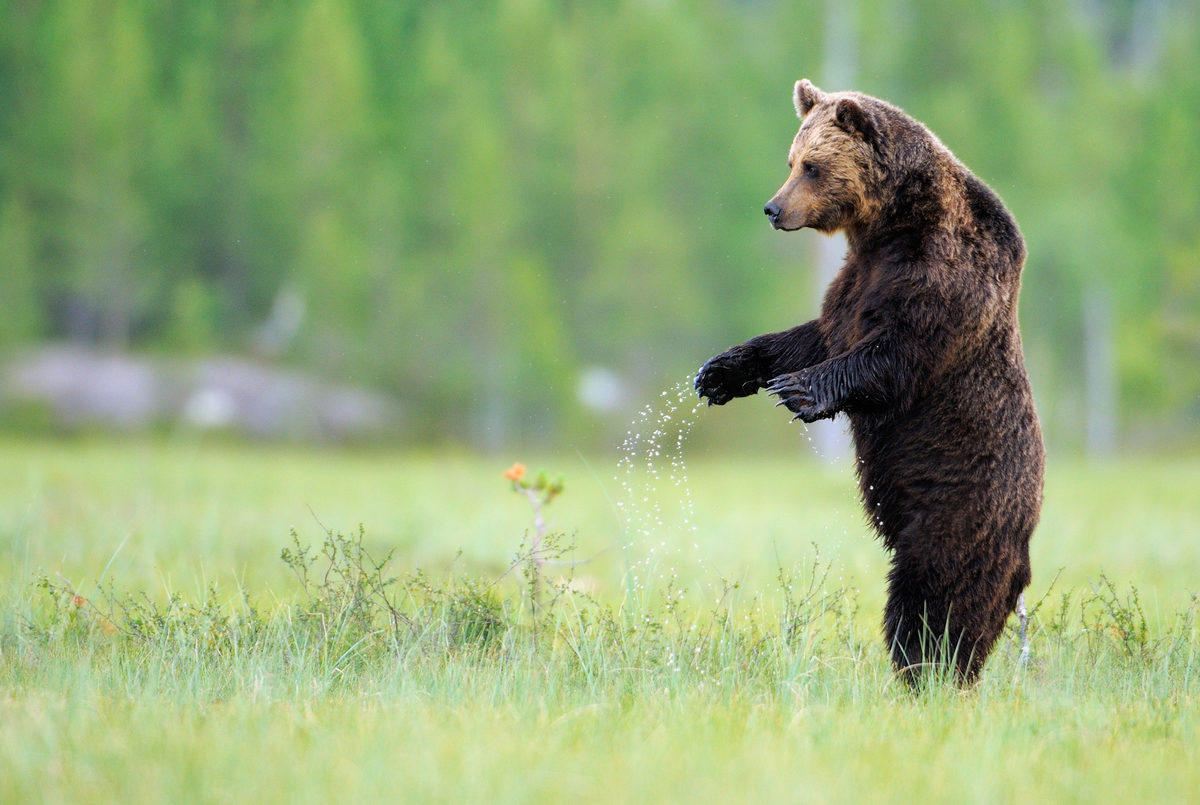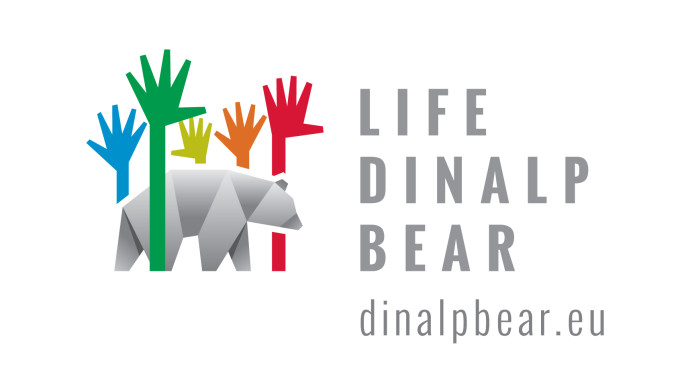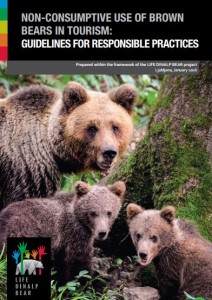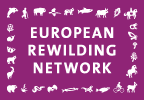Today, conflicts with man still threaten Europe’s large carnivores species, and prevent the full recovery of their populations. In the past, strategies to mitigate these conflicts have varied between different European countries, they have typically focused on keeping large carnivores away from humans, either by eradicating them, or by restricting human access to areas where these carnivores exist.

A new conservation approach
It has become increasingly evident, however, that these two extreme approaches cannot satisfactorily solve the problems created by the co-existence of large carnivores and humans. We clearly need new, innovative solutions.
One conservation approach that is rapidly gaining public acceptance and traction with conservation practitioners is the non-consumptive use of wildlife. This provides ample opportunities for the effective conservation of endangered species, while simultaneously developing alternative sources of revenue for rural communities.
Using wildlife to generate a financial return, while simultaneously saving it, is a conservation approach that applies not only to the remote wilderness areas of Africa, Asia or North America. It can also work in densely populated Europe, where growing numbers of people travel to rural areas to discover the last (or re-established) areas of wilderness on the continent.
 The LIFE DINALP BEAR is a European Commission-funded project working to promote the conservation and management of brown bears in the northern Dinaric Mountains and the south-eastern Alps (i.e., Austria, Croatia, Italy and Slovenia) by exploring and understanding human-bear conflicts, and by using non-lethal solutions to mitigate them. The project is also a member of the European Rewilding Network, sharing experience and knowledge with other members.
The LIFE DINALP BEAR is a European Commission-funded project working to promote the conservation and management of brown bears in the northern Dinaric Mountains and the south-eastern Alps (i.e., Austria, Croatia, Italy and Slovenia) by exploring and understanding human-bear conflicts, and by using non-lethal solutions to mitigate them. The project is also a member of the European Rewilding Network, sharing experience and knowledge with other members.
Within the framework of this project, I have had the opportunity, as a large carnivore specialist, to develop guidelines for responsible practice in the non-consumptive use of brown bears in tourism.

Making a case for bears
Bears continue to be hunted in many European countries, but their growing importance in wildlife tourism, conservation and education means they are increasingly worth more alive than dead. The non-consumptive use of bears in tourism takes advantage of the growing need of humans to experience “pure” wildlife. It involves recreational activities that don’t “use” bears, but value them for their roles of seed dispersal and removal of carcasses and as an integral part of a well-functioning ecosystem.
Today bear watching and photography are the most common forms of non-consumptive bear use. In North America the non-consumptive use of bears in wildlife tourism has been practiced for many years, but this approach is relatively new in southern Europe.
Bears in the northern Dinaric Mountains belong to the Dinaric-Pindos brown bear population, which is one of the most important bear populations in Europe. Slovenia and Croatia, the two main countries involved in the LIFE DINALP BEAR project, have pioneered many aspects of the management and conservation of bears in Europe; the development of these guidelines was a ground-breaking attempt to improve living conditions for humans and bears in these two countries.
Until now, bears in Slovenia and Croatia have been valued primarily as a big game species. As a protected animal, bears in the region are often perceived by rural communities as pests that cause damage and endanger people, and as a species owned and protected by the government. But with wildlife tourism slowly developing into an important source of income for communities living in brown bear habitat, it has significant potential for enhancing public acceptance of the species.
In the course of developing these guidelines, I had the opportunity to visit both Croatia and Slovenia, meeting with many local bear experts. We drew up a detailed questionnaire on the prospects of developing a bear-focused tourism product, which was then distributed amongst local stakeholders such as hunting associations and tour operators. Based on the results of the questionnaire, and taking into account the current social and cultural settings in Slovenia and Croatia, we recommended the development of a nature and bear-related “experience” in the northern Dinaric Mountains, consisting of three distinct products.
Bear trail

The “bear trail” product focuses on experiencing bear habitat and signs of the presence of wild bears in their natural environment. This is done by walking along bear trails, looking for bear signs (such as footprints, scat and dens), witnessing evidence of bear behaviour (such as marking and rubbing on trees), and understanding the impact of the species on its environment (such as on other animals, the forest and humans).
Bear watching
The “bear watching” product focuses primarily on the observation and photographing of bears from a hide specifically designed for this purpose.
Coexistence
The “coexistence” product is basically a “back to nature” product, aimed at promoting the connection between humans and nature, and improving coexistence with large carnivores. Bears are a charismatic species, but their large habitat requirements and opportunistic feeding behaviour can cause damage and lead to conflict with local communities. “Coexistence products” that promote the efficient protection of livestock, through the use of electric fences, shepherds and guard dogs, help to increase human tolerance of bears, thereby improving their long-term conservation prospects.
 With limited experience in developing bear-related tourism products in Europe, the guidelines we produced attempt to provide the general framework and guidance for aspiring conservation practitioners and tourism entrepreneurs to establish such products. More specifically, they provide general information (such as “do/do not recommendations”) on guide training, security and education procedures, business considerations and risk management, and general guidelines related to all forms of bear tourism. A key aspect of this latter issue is the importance of preventing bears from becoming dependent on artificial food sources (this applies to all wildlife).
With limited experience in developing bear-related tourism products in Europe, the guidelines we produced attempt to provide the general framework and guidance for aspiring conservation practitioners and tourism entrepreneurs to establish such products. More specifically, they provide general information (such as “do/do not recommendations”) on guide training, security and education procedures, business considerations and risk management, and general guidelines related to all forms of bear tourism. A key aspect of this latter issue is the importance of preventing bears from becoming dependent on artificial food sources (this applies to all wildlife).
Dr. Miha Krofel, from LIFE DINALP BEAR project team about the guidelines – “This document on responsible bear eco-tourism developed by Alexandros Karamanlidis is something we really need for many parts of Europe. Bear watching can bring negative consequences if not managed properly. These guidelines give clear recommendations what should and shouldn’t be done, thus promoting good practices that will bring benefits to both local people and the bears.”
Bear watching with Rewilding Europe

The European Safari Company (ESC), which launched at the end of 2016, offers bear watching experience in the Velebit Mountains rewilding area in Croatia, using specially designed wildlife watching hides.
The European Safari Company is a strategic partner of Rewilding Europe that specialises in nature-based experiential travel in Europe and allows people to give back to nature just by travelling. With each trip, travellers directly support rewilding activities and local communities.
Experiencing wildlife at close range is a way to create new sources of income for rural communities. Providing financial incentives for the appreciation and protection of wildlife is central to Rewilding Europe’s philosophy. These guidelines not only provide an important tool for bear watching in the DINALP Region, but also for developing responsible bear watching in other parts of Europe. Apart from Velebit in Croatia, Rewilding Europe is working to facilitate bear watching in the Southern Carpathians, Central Apennines, Rhodope Mountains and in Lapland.
 By sharing information, knowledge and experience of restoration and rewilding work carried out across the continent, the European Rewilding Network (ERN) ensures cooperation and progress. Growing rapidly since it was founded in October 2013, the influence and outreach of the ERN has gone from strength to strength. From Spain to Sweden, Bulgaria to Belgium, 51 current members hail from 25 countries across Europe. Rewilding Europe extends a warm welcome to rewilding initiatives that are not yet part of the ERN. Information on applying for membership can be found here.
By sharing information, knowledge and experience of restoration and rewilding work carried out across the continent, the European Rewilding Network (ERN) ensures cooperation and progress. Growing rapidly since it was founded in October 2013, the influence and outreach of the ERN has gone from strength to strength. From Spain to Sweden, Bulgaria to Belgium, 51 current members hail from 25 countries across Europe. Rewilding Europe extends a warm welcome to rewilding initiatives that are not yet part of the ERN. Information on applying for membership can be found here.
